Mirella Sichirollo Patzer's Blog, page 48
December 2, 2011
The Winter Palace by Eva Stachniak
Catherine the Great's story told through the eyes of a spy!

Overview
From award-winning author Eva Stachniak comes this passionate novel that illuminates, as only fiction can, the early life of one of history's boldest women. The Winter Palace tells the epic story of Catherine the Great's improbable rise to power—as seen through the ever-watchful eyes of an all-but-invisible servant close to the throne.
Her name is Barbara—in Russian, Varvara. Nimble-witted and attentive, she's allowed into the employ of the Empress Elizabeth, amid the glitter and cruelty of the world's most eminent court. Under the tutelage of Count Bestuzhev, Chancellor and spymaster, Varvara will be educated in skills from lock picking to lovemaking, learning above all else to listen—and to wait for opportunity. That opportunity arrives in a slender young princess from Zerbst named Sophie, a playful teenager destined to become the indomitable Catherine the Great. Sophie's destiny at court is to marry the Empress's nephew, but she has other, loftier, more dangerous ambitions, and she proves to be more guileful than she first appears.
What Sophie needs is an insider at court, a loyal pair of eyes and ears who knows the traps, the conspiracies, and the treacheries that surround her. Varvara will become Sophie's confidante—and together the two young women will rise to the pinnacle of absolute power.
With dazzling details and intense drama, Eva Stachniak depicts Varvara's secret alliance with Catherine as the princess grows into a legend—through an enforced marriage, illicit seductions, and, at last, the shocking coup to assume the throne of all of Russia.
Impeccably researched and magnificently written, The Winter Palace is an irresistible peek through the keyhole of one of history's grandest tales.
Review
The Winter Palace by Eva Stachniak is a novel about a young woman named Barbara (or Varvara for the Russian version). She was the daughter of a Polish bookbinder who, through fate, finds herself an orphan and is sent to work in the palace of the elderly Empress Elizabeth. Before long, a marriage is arranged between a young princess named Sophie to Elizabeth's only heir, her nephew. Princess Sophie is then renamed as Catherine she befriends Sophie. Behind the scenes, Barbara is left with no choice but to become a spy within the palace and soon she is trapped by intrigues and divided loyalties.
Told in first person narrative voice of Barbara, the novel quickly engaged me. Catherine and Elizabeth were portrayed as difficult antagonists, which added a continual thread of conflict from start to finish. Their personalities continually evolved and kept me interested. The author wrote a beautifully researched novel about the rise of a fascinating woman of history. Readers need to be aware that this is novel is only indirectly about Catherine the Great told through the eyes of another woman.
I LOVE COMMENTS











Overview
From award-winning author Eva Stachniak comes this passionate novel that illuminates, as only fiction can, the early life of one of history's boldest women. The Winter Palace tells the epic story of Catherine the Great's improbable rise to power—as seen through the ever-watchful eyes of an all-but-invisible servant close to the throne.
Her name is Barbara—in Russian, Varvara. Nimble-witted and attentive, she's allowed into the employ of the Empress Elizabeth, amid the glitter and cruelty of the world's most eminent court. Under the tutelage of Count Bestuzhev, Chancellor and spymaster, Varvara will be educated in skills from lock picking to lovemaking, learning above all else to listen—and to wait for opportunity. That opportunity arrives in a slender young princess from Zerbst named Sophie, a playful teenager destined to become the indomitable Catherine the Great. Sophie's destiny at court is to marry the Empress's nephew, but she has other, loftier, more dangerous ambitions, and she proves to be more guileful than she first appears.
What Sophie needs is an insider at court, a loyal pair of eyes and ears who knows the traps, the conspiracies, and the treacheries that surround her. Varvara will become Sophie's confidante—and together the two young women will rise to the pinnacle of absolute power.
With dazzling details and intense drama, Eva Stachniak depicts Varvara's secret alliance with Catherine as the princess grows into a legend—through an enforced marriage, illicit seductions, and, at last, the shocking coup to assume the throne of all of Russia.
Impeccably researched and magnificently written, The Winter Palace is an irresistible peek through the keyhole of one of history's grandest tales.
Review
The Winter Palace by Eva Stachniak is a novel about a young woman named Barbara (or Varvara for the Russian version). She was the daughter of a Polish bookbinder who, through fate, finds herself an orphan and is sent to work in the palace of the elderly Empress Elizabeth. Before long, a marriage is arranged between a young princess named Sophie to Elizabeth's only heir, her nephew. Princess Sophie is then renamed as Catherine she befriends Sophie. Behind the scenes, Barbara is left with no choice but to become a spy within the palace and soon she is trapped by intrigues and divided loyalties.
Told in first person narrative voice of Barbara, the novel quickly engaged me. Catherine and Elizabeth were portrayed as difficult antagonists, which added a continual thread of conflict from start to finish. Their personalities continually evolved and kept me interested. The author wrote a beautifully researched novel about the rise of a fascinating woman of history. Readers need to be aware that this is novel is only indirectly about Catherine the Great told through the eyes of another woman.
I LOVE COMMENTS










Published on December 02, 2011 23:36
Marguerite de Valois Quote
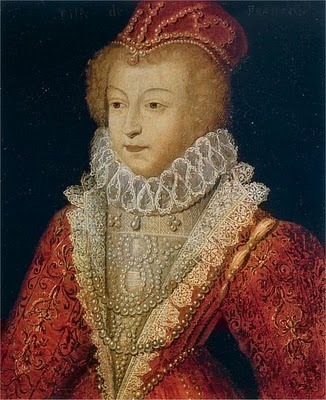
We shall all be perfectly virtuous when there is no longer any flesh on our bones. Marguerite de Valois









Published on December 02, 2011 07:34
November 29, 2011
Hair styles of the medieval period
Hair adornments in medieval times
Accessories used to Stylize Hair during Medieval Period

During medieval times it was difficult to imagine a person without headwear. Excluding the children, it was compulsory to wear head pieces whether they were men or women belonging to all ages. At that time headwears were not only decorative pieces but also played a part in defining people's etiquettes and elegancy, moreover it was a part of social standing of people in society.
We can say that the war for piece of land and supremacy had led to the emergency of headwears. Some coverings were used to protect the head from serious injuries which gradually enter into civilization. Since the beginning of medieval period, as medieval costumes headwears too were essential part of attire. Throughout the medieval history with the development in tailoring skill of people and technology, head covers too had gone through a great degree of changes.
During late medieval period, everyone in European country used to wear head pieces which in their modern avtar are equally famous among masses. It was allowed for Italian women to uncover their head while the women's of other countries cover their head with wimple, barbet and fillet.

16th century Italian woman
Fillet, a narrow head band was worn by unmarried women and by certain monks along with a wimple, it was a garment which underpass through chin to give support to linen cap or coif and a veil.
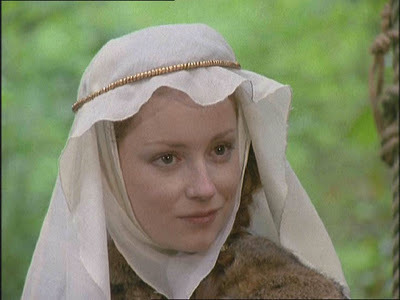
Another accessory crespines used to confine the hair from both side of head were generally made of wire or knitted mesh. During the same period, Italian women abolished the use of head wears with transparent head gauzes.

In today's times wimples are more common among nuns who are still attached to traditional way of wearing caps. In the meanwhile it was allowed for men to keep their head uncover.
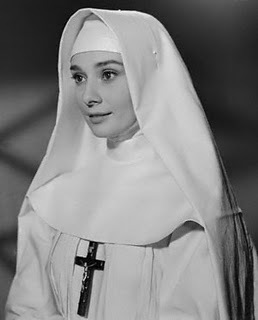
With the beginning of fifteenth century, an era of expensive and extravagant clothes started which were huge and voluminous in size and gracious in look. To enhance the overall look of attire head coverings too became stylish, lased with jewelries and feathers. Crespines too come in its developed form, now they were used to gather hair in head's back. At that time Hennin was the most expensive hair-dress styled in styled in cone or steeple shape. This hair-dress had wired frame which was covered by fabric and had an attached veil. As for men, vest and doublets were more common. Their tall crowned hats with or without brims displayed their status in society.
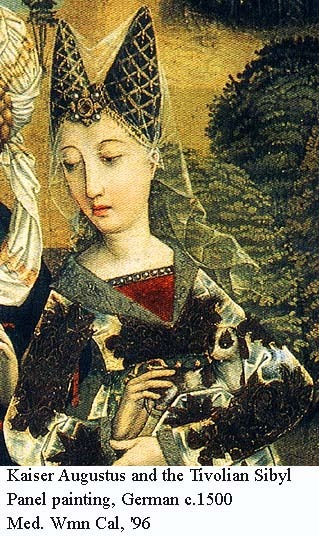
Heartshaped Henin
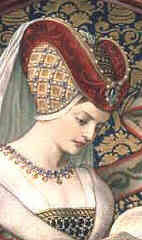
Another Heart-shaped Henin

Truncated Henin

Conical HeninWhen the renaissance era rises, head-wears also came in its best form. They were now more elaborate and had finely detailed designs. Emergence of different styles of renaissance costumes in different part of Europe led to the designing of more elaborative headgears to match their dresses. Gabble hood, a headgear had embroidered lappets was famous among English women.
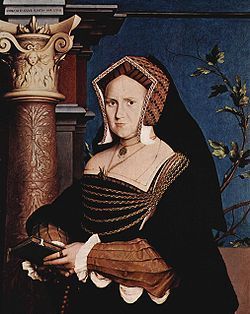
Gabble Hood
French hood as the name suggest was famous in France. It was round in shape, worn over veil in back of head.
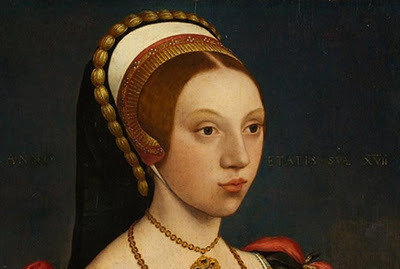
French Hood
Centrally parted hair was confined in veil.

Men wore large hats and German Barrett was popular among them.
Article Source: http://www.articlesbase.com/clothing-articles/accessories-used-to-stylize-hair-during-medieval-period-5430396.html
About the Author
For more information on renaissance clothes, renaissance headgears medieval costumes and other accessories.
I LOVE COMMENTS










Accessories used to Stylize Hair during Medieval Period

During medieval times it was difficult to imagine a person without headwear. Excluding the children, it was compulsory to wear head pieces whether they were men or women belonging to all ages. At that time headwears were not only decorative pieces but also played a part in defining people's etiquettes and elegancy, moreover it was a part of social standing of people in society.
We can say that the war for piece of land and supremacy had led to the emergency of headwears. Some coverings were used to protect the head from serious injuries which gradually enter into civilization. Since the beginning of medieval period, as medieval costumes headwears too were essential part of attire. Throughout the medieval history with the development in tailoring skill of people and technology, head covers too had gone through a great degree of changes.
During late medieval period, everyone in European country used to wear head pieces which in their modern avtar are equally famous among masses. It was allowed for Italian women to uncover their head while the women's of other countries cover their head with wimple, barbet and fillet.

16th century Italian woman
Fillet, a narrow head band was worn by unmarried women and by certain monks along with a wimple, it was a garment which underpass through chin to give support to linen cap or coif and a veil.

Another accessory crespines used to confine the hair from both side of head were generally made of wire or knitted mesh. During the same period, Italian women abolished the use of head wears with transparent head gauzes.

In today's times wimples are more common among nuns who are still attached to traditional way of wearing caps. In the meanwhile it was allowed for men to keep their head uncover.

With the beginning of fifteenth century, an era of expensive and extravagant clothes started which were huge and voluminous in size and gracious in look. To enhance the overall look of attire head coverings too became stylish, lased with jewelries and feathers. Crespines too come in its developed form, now they were used to gather hair in head's back. At that time Hennin was the most expensive hair-dress styled in styled in cone or steeple shape. This hair-dress had wired frame which was covered by fabric and had an attached veil. As for men, vest and doublets were more common. Their tall crowned hats with or without brims displayed their status in society.

Heartshaped Henin

Another Heart-shaped Henin

Truncated Henin

Conical HeninWhen the renaissance era rises, head-wears also came in its best form. They were now more elaborate and had finely detailed designs. Emergence of different styles of renaissance costumes in different part of Europe led to the designing of more elaborative headgears to match their dresses. Gabble hood, a headgear had embroidered lappets was famous among English women.

Gabble Hood
French hood as the name suggest was famous in France. It was round in shape, worn over veil in back of head.

French Hood
Centrally parted hair was confined in veil.

Men wore large hats and German Barrett was popular among them.
Article Source: http://www.articlesbase.com/clothing-articles/accessories-used-to-stylize-hair-during-medieval-period-5430396.html
About the Author
For more information on renaissance clothes, renaissance headgears medieval costumes and other accessories.
I LOVE COMMENTS










Published on November 29, 2011 12:34
November 28, 2011
Culloden Spirit by Anita Davison
A fabulous Victorian era Paranormal Romance
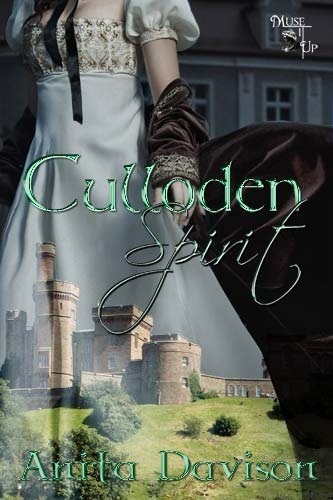
Overview
Carrie Gordon's season in her native York was an unqualified success, until the young man who paid her so much attention married someone else.
When her family takes a summer trip to her father's ancestral home in the Scottish Highlands, her handsome Scottish cousin, Duncan McRae, takes an immediate dislike to Carrie, mainly due to her father's plans to refurbish Cair Innes castle which is in need of extensive repair beyond the means of its present owner and resident, Iain McRae.
Carrie feels the vacation will be a disaster until she discovers a strange young man while exploring the derelict castle, However, she soon learns Ruairi McRae is not what he seems, and the battle he intends to fight was lost by his clan a hundred and fifty years before.
Will Carrie be able to accept that she cannot be part of Ruairi's world? And when the Roma arrive to camp on Bucks Meadow as they do every summer, who is the beautiful gypsy girl Duncan won't talk about?
Review
I always enjoy Anita Davison's novels, and I was eager to read Culloden Spirit, her latest release. I love a good Scottish historical novel, and this one promised to be a good one. It certainly did not disappoint.
Culloden Spirit is a Victorian paranormal romance about a young American woman, Carrie Gordon who travels to her ancestral home in Scotland, which is in desperate need of repair. Surrounded by the highlands, Carrie encounters her dashing cousin, Duncan McRae, and an endearing young man named Ruari. These two love interests form the basis of the story. As she slowly gets to know each of these fascinating men, historical secrets about her ancestors and the castle itself are slowly and very tantalizingly revealed.
If you've never read one of Anita Davison's books, I encourage you to pick one up. She is a talented writer who paints vivid pictures of landscapes, clothing, and the social norms of the era. Her scenes are sprinkled with realistic character nuances that makes them real, as if they can leap off the page. Her strong writing skills and knowledge of the Victorian era lends realism to the tale, especially with the addition of an underlying paranormal element. With her lyrical prose, she stirs a reader's emotion. A subplot of a mysterious Roma family living in the castle's shadows added interest and variety. Intrigue, mystery, a strong romance, and a shocking surprise ending makes this novel a must read! Two thumbs up!
I LOVE COMMENTS











Overview
Carrie Gordon's season in her native York was an unqualified success, until the young man who paid her so much attention married someone else.
When her family takes a summer trip to her father's ancestral home in the Scottish Highlands, her handsome Scottish cousin, Duncan McRae, takes an immediate dislike to Carrie, mainly due to her father's plans to refurbish Cair Innes castle which is in need of extensive repair beyond the means of its present owner and resident, Iain McRae.
Carrie feels the vacation will be a disaster until she discovers a strange young man while exploring the derelict castle, However, she soon learns Ruairi McRae is not what he seems, and the battle he intends to fight was lost by his clan a hundred and fifty years before.
Will Carrie be able to accept that she cannot be part of Ruairi's world? And when the Roma arrive to camp on Bucks Meadow as they do every summer, who is the beautiful gypsy girl Duncan won't talk about?
Review
I always enjoy Anita Davison's novels, and I was eager to read Culloden Spirit, her latest release. I love a good Scottish historical novel, and this one promised to be a good one. It certainly did not disappoint.
Culloden Spirit is a Victorian paranormal romance about a young American woman, Carrie Gordon who travels to her ancestral home in Scotland, which is in desperate need of repair. Surrounded by the highlands, Carrie encounters her dashing cousin, Duncan McRae, and an endearing young man named Ruari. These two love interests form the basis of the story. As she slowly gets to know each of these fascinating men, historical secrets about her ancestors and the castle itself are slowly and very tantalizingly revealed.
If you've never read one of Anita Davison's books, I encourage you to pick one up. She is a talented writer who paints vivid pictures of landscapes, clothing, and the social norms of the era. Her scenes are sprinkled with realistic character nuances that makes them real, as if they can leap off the page. Her strong writing skills and knowledge of the Victorian era lends realism to the tale, especially with the addition of an underlying paranormal element. With her lyrical prose, she stirs a reader's emotion. A subplot of a mysterious Roma family living in the castle's shadows added interest and variety. Intrigue, mystery, a strong romance, and a shocking surprise ending makes this novel a must read! Two thumbs up!
I LOVE COMMENTS










Published on November 28, 2011 10:55
November 25, 2011
Song of the Nile by Stephanie Dray
Song of the Nile - A novel of Cleopatra's daughter and interview with Stephanie Dray!

Synopsis
Sorceress. Seductress. Schemer. Cleopatra's daughter has become the emperor's most unlikely apprentice and the one woman who can destroy his empire...
Having survived her perilous childhood as a royal captive of Rome, Selene pledged her loyalty to Augustus and swore she would become his very own Cleopatra. Now the young queen faces an uncertain destiny in a foreign land.
Forced to marry a man of the emperor's choosing, Selene will not allow her new husband to rule in her name. She quickly establishes herself as a capable leader in her own right and as a religious icon. Beginning the hard work of building a new nation, she wins the love of her new subjects and makes herself vital to Rome by bringing forth bountiful harvests.
But it's the magic of Isis flowing through her veins that makes her indispensable to the emperor. Against a backdrop of imperial politics and religious persecution, Cleopatra's daughter beguiles her way to the very precipice of power. She has never forgotten her birthright, but will the price of her mother's throne be more than she's willing to pay?
Review
Song of the Nile is the much-anticipated second book of a trilogy based on the life of Cleopatra's and Mark Anthony's daughter, Selene. This novel, however, easily stands on its own and it is not necessary to have read the first book in order to fully enjoy this one, but you'll definitely want to collect all three books in the series.
As queen of Mauretania, Selene continues her efforts to reclaim her mother's throne of Egypt. Like her mother before her, Selene is a shrewd young woman and must use her wits against the cunning strategies of Caesar.
Author Stephanie Dray did a splendid job of recreating Selene from vulnerable young woman to woman of great strength. The characters are complex and intriguing, at times likeable and at other times detestable. And that's what made them so believable. Although the novel closely follows historical facts that are known about Cleopatra Selene, the author has believably filled in what was missing with vibrant detail and additional conflict that truly brings the story to life.
Delicious prose, an exotic setting, and a heroine that will impress you with her unfailing courage and determination to reclaim what was once hers, are elements that make this book worth reading. It is historical women's fiction at its finest and I recommend you get both Lily of the Nile and Song of the Nile so you can follow the trilogy from start to finish.
 An Interview with Author Stephanie Dray
An Interview with Author Stephanie Dray
1. Welcome, I'm so glad to have this opportunity to chat with you. Can you share with my readers the essence of the story you've penned?
Thanks so much for having me here. The honor is all mine!
Song of the Nile is the story of Cleopatra's daughter, a little girl who was orphaned and taken away from the only home she'd ever known, marched through the streets of Rome as a captive prisoner, and raised by the very people who killed her family. That she was able to carve a future for herself out of that horrific past, by endearing herself to her parents' enemies and keeping quiet about her true feelings, is a testament to her strength. However, it also meant that she was deprived of a true voice most of her life. I try to give that voice back to her.
2. You've chosen a very interesting title. What inspired the title? What inspired the book?
The original title for this book was Sorceress of the Nile because I wanted to get across that the Romans were so suspicious of Egyptian magic and they feared it in the hands of a woman. My heroine is as feared for her association with magic as for her actual wielding of it. The publisher thought the title was too much like fantasy, so we changed it to Song of the Nile which is just as appropriate because Egypt sings to my heroine and tries to lure her home.
3. What makes this book special to you?
This is a book that delves deep into the human heart and goes very dark places. Cleopatra Selene lost so much in her life--she suffered unimaginable tragedies by the time she became a bride at just fourteen years old. Exploring how it is that she was able to put her life back together to become one of the greatest queens in the ancient world was truly an honor for me. And an inspiration.
4. What makes this a book that people MUST read and WHY?
I think Selene's story will help every woman find her own inner goddess to guide her. Moreover, Selene's story is a lesson to us that the progress of women's liberation has not been a straight line; there have been setbacks in the past and there may be setbacks in the future. We should be wary of them even now.
5. What sparks your creativity? Any tips to help others spark their own creativity?
Reading books! I learn so much from how other writers have tackled problems that I'm always inspired. Also, meeting with other writers at conferences always leaves me ready to go.
6. What has been the biggest stumbling block in your writing? Can you share some tips to help others get past similar problems?
This book was difficult for me to write for a couple of reasons. The first reason was that I knew it was going to be controversial; it's darkly beautiful. I'm exploring cultural issues that would have been normal for Selene, such as slavery, rape and incest. But these things shock the modern senses. And they should shock us. But we have to know where we came from to understand where we are. I had to just swallow my fear and let some like-minded readers see the early drafts of the book so that I could have more confidence in what I was doing. Having that early feedback that this book was stronger than the first...that helped me persevere. The second reason it was difficult for me is that it is such an emotional story. To create this character, I had to channel her a little bit. I had to imagine how difficult and painful her life might be. I cried more than once writing this novel, but by the end, I was also filled with joy.
7. Tell me about the most unusual things you have done to promote your book?
Oh, the crazy things I've done! I suppose the wackiest is that I started making Egyptian-themed jewelry to give away with my books.
8. Each author is different in the way they create a work of fiction. Please describe for us how you plan or plot a story.
For starters, I create a giant timeline of known historical events. Then I stare at the timeline a lot, as if I can divine a pattern from it. I ask myself what themes suggest themselves from the historical record. Is this a time of recklessness when people are making fatal mistakes? Is there a slow and steady march to power? What's the arc of this person's life and can it be twisted into a story that follows any kind of journey? When I stared at the timeline of Cleopatra Selene's life, I saw that it was inextricably wound up with Augustus. She lived at his sufferance. She ruled for his pleasure. But all the while, she did these little things to assert her independence and to memorialize her dead. She commissioned coins honoring her dead mother that could have created trouble for her with the emperor. She built temples to her forbidden goddess. She named her son after her lost dynasty. This suggested to me a woman who suffered from survivor's guilt, so I used that to start filling in the holes in the historical record.
9. Authors are very unique in the way they write, the tools they use, when they write, etc. Please describe a typical writing day for you? How do you organize your day?
I use two tools for historical fiction. The first is a timeline program called Aeon Timeline and I'm desperately glad for it because math has never been my strong-suit. This program helps me keep track of the ages of my characters when certain things are happening--not to mention the events themselves. The second program I use to write is called Scrivener. It allows me to keep all my notes and research in one convenient place. I'm so dependent on it, I'm not sure I could write without it anymore! As for the structure of my day, it used to be that I'd get up, get coffee, start writing and not stop until I'd hit my word count. Lately, marketing and promotional activities have started to get in the way. I wake up, take care of urgent emails, figure out if there are any outstanding obligations I might have--books to send out, people to thank, tweets to send, etc. This takes up far more time than it should and I'm recently considering whether or not simply withdrawing into hermit land would not be a better approach.
10. What is your current work in progress?
I'm in the midst of writing the third and final book in the Nile trilogy about Cleopatra Selene's life. This will cover the meat of her career as a successful ruler, all her amazing accomplishments, not to mention her legacy as a mother and as the last Ptolemaic queen. It's also my last chance to say goodbye to her, so it's been fairly emotional writing it.
11. Can you tell us where to find more information about you and your books and how readers can reach you?
I really hope readers will subscribe to my very infrequent, but always informative newsletter. I like to include recipes from ancient history, little known facts, recent discoveries about women in history, and the occasional update about my books. Also, I give out free stuff to subscribers every time I send out the newsletter and who doesn't want free books? If folks want to find me online, however, I tweet as stephaniehdray and I'm reachable through my website at StephanieDray.com.
I love when folks stop by and tell me their thoughts on my books.
12. What would you like our readers to know about you and your writing?
My style is very allegorical. I take the historical record, then I infuse it with mythology. I do this because even though history is interesting all on its own, I want to make sense of these events for their symbolic import. This is why readers will find themes such as the divine feminine sprinkled throughout my work and why fantasy elements creep into an otherwise faithful historical narrative.
Thanks so much for having me here today!
About Stephanie…
Stephanie graduated with a degree in Government from Smith, a small women's college in Massachusetts where–to the consternation of her devoted professors–she was unable to master Latin. However, her focus on Middle Eastern Studies gave her a deeper understanding of the consequences of Egypt's ancient clash with Rome, both in terms of the still-extant tensions between East and West as well as the worldwide decline of female-oriented religion.
Before she wrote novels, Stephanie was a lawyer, a game designer, and a teacher. Now she uses the transformative power of magic realism to illuminate the stories of women in history and inspire the young women of today. She remains fascinated by all things Roman or Egyptian and has–to the consternation of her devoted husband–collected a house full of cats and ancient artifacts.
Berkley Trade October 2011 (Trade Paperback)
# ISBN-10: 0425243044
# ISBN-13: 9780425243046
Purchase Info
Amazon
Barnes and Noble
IndieBound
Borders
Constellation Books
Powell's
I LOVE COMMENTS











Synopsis
Sorceress. Seductress. Schemer. Cleopatra's daughter has become the emperor's most unlikely apprentice and the one woman who can destroy his empire...
Having survived her perilous childhood as a royal captive of Rome, Selene pledged her loyalty to Augustus and swore she would become his very own Cleopatra. Now the young queen faces an uncertain destiny in a foreign land.
Forced to marry a man of the emperor's choosing, Selene will not allow her new husband to rule in her name. She quickly establishes herself as a capable leader in her own right and as a religious icon. Beginning the hard work of building a new nation, she wins the love of her new subjects and makes herself vital to Rome by bringing forth bountiful harvests.
But it's the magic of Isis flowing through her veins that makes her indispensable to the emperor. Against a backdrop of imperial politics and religious persecution, Cleopatra's daughter beguiles her way to the very precipice of power. She has never forgotten her birthright, but will the price of her mother's throne be more than she's willing to pay?
Review
Song of the Nile is the much-anticipated second book of a trilogy based on the life of Cleopatra's and Mark Anthony's daughter, Selene. This novel, however, easily stands on its own and it is not necessary to have read the first book in order to fully enjoy this one, but you'll definitely want to collect all three books in the series.
As queen of Mauretania, Selene continues her efforts to reclaim her mother's throne of Egypt. Like her mother before her, Selene is a shrewd young woman and must use her wits against the cunning strategies of Caesar.
Author Stephanie Dray did a splendid job of recreating Selene from vulnerable young woman to woman of great strength. The characters are complex and intriguing, at times likeable and at other times detestable. And that's what made them so believable. Although the novel closely follows historical facts that are known about Cleopatra Selene, the author has believably filled in what was missing with vibrant detail and additional conflict that truly brings the story to life.
Delicious prose, an exotic setting, and a heroine that will impress you with her unfailing courage and determination to reclaim what was once hers, are elements that make this book worth reading. It is historical women's fiction at its finest and I recommend you get both Lily of the Nile and Song of the Nile so you can follow the trilogy from start to finish.
 An Interview with Author Stephanie Dray
An Interview with Author Stephanie Dray1. Welcome, I'm so glad to have this opportunity to chat with you. Can you share with my readers the essence of the story you've penned?
Thanks so much for having me here. The honor is all mine!
Song of the Nile is the story of Cleopatra's daughter, a little girl who was orphaned and taken away from the only home she'd ever known, marched through the streets of Rome as a captive prisoner, and raised by the very people who killed her family. That she was able to carve a future for herself out of that horrific past, by endearing herself to her parents' enemies and keeping quiet about her true feelings, is a testament to her strength. However, it also meant that she was deprived of a true voice most of her life. I try to give that voice back to her.
2. You've chosen a very interesting title. What inspired the title? What inspired the book?
The original title for this book was Sorceress of the Nile because I wanted to get across that the Romans were so suspicious of Egyptian magic and they feared it in the hands of a woman. My heroine is as feared for her association with magic as for her actual wielding of it. The publisher thought the title was too much like fantasy, so we changed it to Song of the Nile which is just as appropriate because Egypt sings to my heroine and tries to lure her home.
3. What makes this book special to you?
This is a book that delves deep into the human heart and goes very dark places. Cleopatra Selene lost so much in her life--she suffered unimaginable tragedies by the time she became a bride at just fourteen years old. Exploring how it is that she was able to put her life back together to become one of the greatest queens in the ancient world was truly an honor for me. And an inspiration.
4. What makes this a book that people MUST read and WHY?
I think Selene's story will help every woman find her own inner goddess to guide her. Moreover, Selene's story is a lesson to us that the progress of women's liberation has not been a straight line; there have been setbacks in the past and there may be setbacks in the future. We should be wary of them even now.
5. What sparks your creativity? Any tips to help others spark their own creativity?
Reading books! I learn so much from how other writers have tackled problems that I'm always inspired. Also, meeting with other writers at conferences always leaves me ready to go.
6. What has been the biggest stumbling block in your writing? Can you share some tips to help others get past similar problems?
This book was difficult for me to write for a couple of reasons. The first reason was that I knew it was going to be controversial; it's darkly beautiful. I'm exploring cultural issues that would have been normal for Selene, such as slavery, rape and incest. But these things shock the modern senses. And they should shock us. But we have to know where we came from to understand where we are. I had to just swallow my fear and let some like-minded readers see the early drafts of the book so that I could have more confidence in what I was doing. Having that early feedback that this book was stronger than the first...that helped me persevere. The second reason it was difficult for me is that it is such an emotional story. To create this character, I had to channel her a little bit. I had to imagine how difficult and painful her life might be. I cried more than once writing this novel, but by the end, I was also filled with joy.
7. Tell me about the most unusual things you have done to promote your book?
Oh, the crazy things I've done! I suppose the wackiest is that I started making Egyptian-themed jewelry to give away with my books.
8. Each author is different in the way they create a work of fiction. Please describe for us how you plan or plot a story.
For starters, I create a giant timeline of known historical events. Then I stare at the timeline a lot, as if I can divine a pattern from it. I ask myself what themes suggest themselves from the historical record. Is this a time of recklessness when people are making fatal mistakes? Is there a slow and steady march to power? What's the arc of this person's life and can it be twisted into a story that follows any kind of journey? When I stared at the timeline of Cleopatra Selene's life, I saw that it was inextricably wound up with Augustus. She lived at his sufferance. She ruled for his pleasure. But all the while, she did these little things to assert her independence and to memorialize her dead. She commissioned coins honoring her dead mother that could have created trouble for her with the emperor. She built temples to her forbidden goddess. She named her son after her lost dynasty. This suggested to me a woman who suffered from survivor's guilt, so I used that to start filling in the holes in the historical record.
9. Authors are very unique in the way they write, the tools they use, when they write, etc. Please describe a typical writing day for you? How do you organize your day?
I use two tools for historical fiction. The first is a timeline program called Aeon Timeline and I'm desperately glad for it because math has never been my strong-suit. This program helps me keep track of the ages of my characters when certain things are happening--not to mention the events themselves. The second program I use to write is called Scrivener. It allows me to keep all my notes and research in one convenient place. I'm so dependent on it, I'm not sure I could write without it anymore! As for the structure of my day, it used to be that I'd get up, get coffee, start writing and not stop until I'd hit my word count. Lately, marketing and promotional activities have started to get in the way. I wake up, take care of urgent emails, figure out if there are any outstanding obligations I might have--books to send out, people to thank, tweets to send, etc. This takes up far more time than it should and I'm recently considering whether or not simply withdrawing into hermit land would not be a better approach.
10. What is your current work in progress?
I'm in the midst of writing the third and final book in the Nile trilogy about Cleopatra Selene's life. This will cover the meat of her career as a successful ruler, all her amazing accomplishments, not to mention her legacy as a mother and as the last Ptolemaic queen. It's also my last chance to say goodbye to her, so it's been fairly emotional writing it.
11. Can you tell us where to find more information about you and your books and how readers can reach you?
I really hope readers will subscribe to my very infrequent, but always informative newsletter. I like to include recipes from ancient history, little known facts, recent discoveries about women in history, and the occasional update about my books. Also, I give out free stuff to subscribers every time I send out the newsletter and who doesn't want free books? If folks want to find me online, however, I tweet as stephaniehdray and I'm reachable through my website at StephanieDray.com.
I love when folks stop by and tell me their thoughts on my books.
12. What would you like our readers to know about you and your writing?
My style is very allegorical. I take the historical record, then I infuse it with mythology. I do this because even though history is interesting all on its own, I want to make sense of these events for their symbolic import. This is why readers will find themes such as the divine feminine sprinkled throughout my work and why fantasy elements creep into an otherwise faithful historical narrative.
Thanks so much for having me here today!
About Stephanie…
Stephanie graduated with a degree in Government from Smith, a small women's college in Massachusetts where–to the consternation of her devoted professors–she was unable to master Latin. However, her focus on Middle Eastern Studies gave her a deeper understanding of the consequences of Egypt's ancient clash with Rome, both in terms of the still-extant tensions between East and West as well as the worldwide decline of female-oriented religion.
Before she wrote novels, Stephanie was a lawyer, a game designer, and a teacher. Now she uses the transformative power of magic realism to illuminate the stories of women in history and inspire the young women of today. She remains fascinated by all things Roman or Egyptian and has–to the consternation of her devoted husband–collected a house full of cats and ancient artifacts.
Berkley Trade October 2011 (Trade Paperback)
# ISBN-10: 0425243044
# ISBN-13: 9780425243046
Purchase Info
Amazon
Barnes and Noble
IndieBound
Borders
Constellation Books
Powell's
I LOVE COMMENTS










Published on November 25, 2011 02:47
November 24, 2011
Catherine Charlotte de Gramont
A woman of decadence who took to bed some of France's wealthiest men!
 Catherine Charlotte de Gramont
Catherine Charlotte de Gramont I am Catherine Charlotte de Gramont and I was fortunate to be born in the year 1631 into a wealthy family of the French nobility.
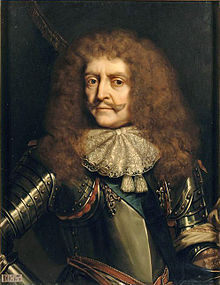 Marshal Antoine de Gramont Catherine's Father
Marshal Antoine de Gramont Catherine's Father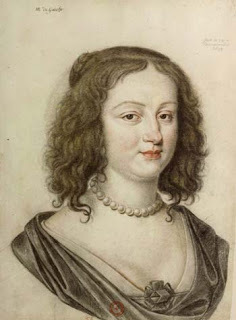
Françoise Marguerite du PlessisCatherine's Mother
My scandalous brother, Armand de Gramont, the celebrated Count of Guiche, was not only known for his haughty egotism and enchanting handsomeness, but also for his love affair with Philippe of France, Duke of Orléans and his wife, Henrietta of England. I shall leave you to make your own conclusions as I have made mine. He was brash, highly sexual, and charming, equally attracting both men and women to him.
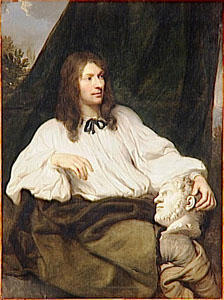 Armand de GramontCount of Guiche
Armand de GramontCount of Guiche In 1660, I was married to Louis de Grimaldi, the 2nd Duke of Valentinois and heir to the throne of Monaco. Prior to meeting him, he was described to me as a glorious and avaricious Italian. Throughout the years of our marriage, I would bear him six children.
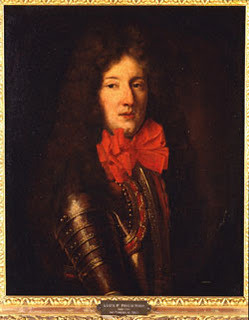
Louis de Grimaldi2nd Duke of ValentinoisCatherine's Husband
Two years after our marriage, in 1662, I became Princess of Monaco and travelled there where I remained for 3 years, however, I preferred Paris to Monaco and thus returned to the French court of Louis XIV where I was given the post of lady-in-waiting to Henrietta of England, sister-in-law and former lover of Louis XIV. It pleased me to be with my aunt, Suzanne Charlotte de Gramont, marquise de Saint Chaumont, who also served Henrietta as governess to her daughters, Marie Louise and Anne Marie.
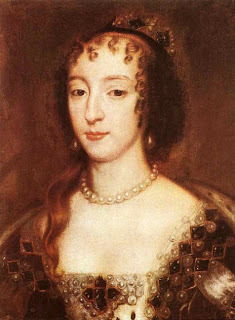 Henrietta
Henrietta Mistress of King Louix XIV
Life in the French court was not always easy, but I soon learned how to use my beauty and wits to gain attention. I took many lovers to my bed including King Louis, the marquis de Villeroi, and my favourit lover of all, my cousin, Antonin Nompar, Marquis de Puyguilheim. When I resumed my affair with my cousin, Nompar, King Louis XIV was outraged, and ordered Nompar to stay away from me. But my cousin refused and the king sent him to the Bastille for six months.
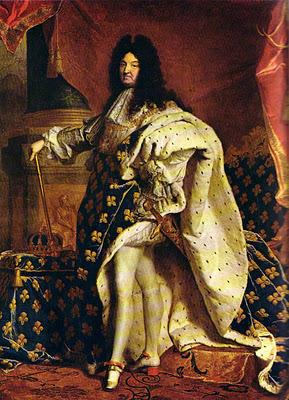 King Louis XIVCatherine's Lover
King Louis XIVCatherine's Lover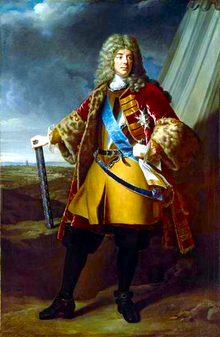 Duc de VilleroiCatherine's Lover
Duc de VilleroiCatherine's Lover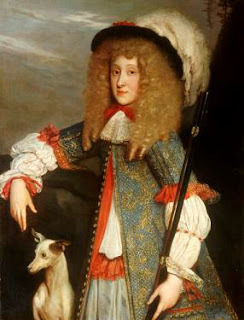 Antonin NomparMarquis de PuyguilheimCatherine's cousin and lover
Antonin NomparMarquis de PuyguilheimCatherine's cousin and loverBehind my back, they called me Catherine the Torrent and Madame de Sévigné dared to describe me as a woman greedy for pleasure.
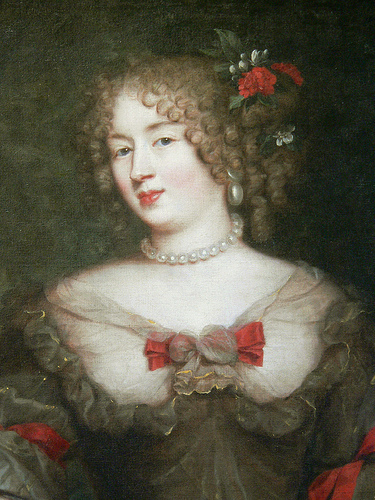 Madame de SevigneNoblewoman of the French Court Ever vigilant, soon, Henrietta and I noticed that King Louis was losing interest in his mistress, Louise de la Vallière and we saw an opportunity.
Madame de SevigneNoblewoman of the French Court Ever vigilant, soon, Henrietta and I noticed that King Louis was losing interest in his mistress, Louise de la Vallière and we saw an opportunity.
 Louise de la VallièreMistress of King Louis XIV
Louise de la VallièreMistress of King Louis XIVWith Henrietta's approval, I began an affair with the king, and during this time, my husband, Louis I, Prince of Monaco, left court and conveniently went off to fight a war for the king.
You may think that this was all my doing, but it was not. Henrietta designed the plot in order to distract the king from Louise in the hopes that he would return to her bed.
Unfortunately, our affair did not last long. King Louis XIV left me after a few months, not to go return to Henrietta, but in favor of Madame de Montespan.
 Madame de MontspanKing Louis XIV's Mistress Gossips also whispered that I had an intimate affair with Henrietta, but this is a secret that I shall keep to myself and reveal to no one.
Madame de MontspanKing Louis XIV's Mistress Gossips also whispered that I had an intimate affair with Henrietta, but this is a secret that I shall keep to myself and reveal to no one. It was then that I began an affair with the Chevalier de Lorraine, a friend of the Duke of Orleans.
 Chevalier de Lorraine
Chevalier de LorraineOur affair angered Henrietta and it ended our friendship. My affairs caused me to be banished from the court and so I fled to Monaco in 1668 with my husband.
In 1672, when France and Holland went to war, my husband was recalled to duty and I was able to return to my beloved France. Madame de Montespan gave me a position as her lady-in-waiting. The king gave me my own home in St Germain and I lived happily there until the day of my death on June 4, 1678. I LOVE COMMENTS










Published on November 24, 2011 17:35
November 23, 2011
Through an Icon's Eyes by Grace Conti
Brilliant from start to finish – you must read this hauntingly beautiful story!
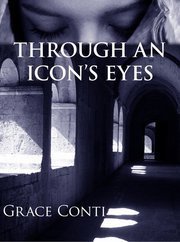
Overview
Set in 1440s London, Italy and Greece against a turbulent political background enflamed by religious divisions, the unfolding narrative of Benedict Paston and Annie Carter's relationship encompass memories of heresy, murder, loss and betrayal.
Benedict an erstwhile sundial maker, is lost to the world. His self-imposed exile, both emotional and physical, in a remote Greek monastery is relieved only by the task of painting an icon under the monks' instruction. Their hope: to save his tortured soul. As the hours of devotion mark the progress of one day in his monastic cell, an escape from Benedict's self-destructive isolation is brokered by the image of Mary Magdalene, guiding him back to his previous life and a new understanding of the events that have led him to Greece.Annie, a young widow beset by visions and facing death, finds that she too has an unusual guide and confessor as the light and shadows mark the progress of an English day in a very different cell…
My Review
I get very, very excited when I discover a novel, so wonderful, so enjoyable, that I include it on my list of lifetime favourites. Set in the 15th century in an ancient abbey, Through an Icon's Eyes by Grace Conte fits that bill exactly!
This is a beautifully written story, so engaging, so engrossing, I could not put it down. One of the main characters is a partially-completed icon of Mary Magdalene who comes alive in the painter's mind acting almost as a conscience for him – guiding, questioning, enlightening. Bit by bit, the story spirals into spectacular events of heresy, murder, lust, and betrayal that culminate into an utterly satisfying, completely shocking ending. Extremely real, three dimensional characters that are ever evolving enchanted me from the very first page. Each page is ripe with wisdom, teases with mystery, and swirls the reader into a hurricane of emotions.
Grace Conti is extremely talented and the beauty of her prose is a joy to read. The author is donating all the proceeds to breast cancer research until Christmas 2011. That in itself makes it worth buying and I encourage everyone to do so. Better yet, the book would make a wonderful gift. Brilliant from start to finish – you must read this book.
I LOVE COMMENTS











Overview
Set in 1440s London, Italy and Greece against a turbulent political background enflamed by religious divisions, the unfolding narrative of Benedict Paston and Annie Carter's relationship encompass memories of heresy, murder, loss and betrayal.
Benedict an erstwhile sundial maker, is lost to the world. His self-imposed exile, both emotional and physical, in a remote Greek monastery is relieved only by the task of painting an icon under the monks' instruction. Their hope: to save his tortured soul. As the hours of devotion mark the progress of one day in his monastic cell, an escape from Benedict's self-destructive isolation is brokered by the image of Mary Magdalene, guiding him back to his previous life and a new understanding of the events that have led him to Greece.Annie, a young widow beset by visions and facing death, finds that she too has an unusual guide and confessor as the light and shadows mark the progress of an English day in a very different cell…
My Review
I get very, very excited when I discover a novel, so wonderful, so enjoyable, that I include it on my list of lifetime favourites. Set in the 15th century in an ancient abbey, Through an Icon's Eyes by Grace Conte fits that bill exactly!
This is a beautifully written story, so engaging, so engrossing, I could not put it down. One of the main characters is a partially-completed icon of Mary Magdalene who comes alive in the painter's mind acting almost as a conscience for him – guiding, questioning, enlightening. Bit by bit, the story spirals into spectacular events of heresy, murder, lust, and betrayal that culminate into an utterly satisfying, completely shocking ending. Extremely real, three dimensional characters that are ever evolving enchanted me from the very first page. Each page is ripe with wisdom, teases with mystery, and swirls the reader into a hurricane of emotions.
Grace Conti is extremely talented and the beauty of her prose is a joy to read. The author is donating all the proceeds to breast cancer research until Christmas 2011. That in itself makes it worth buying and I encourage everyone to do so. Better yet, the book would make a wonderful gift. Brilliant from start to finish – you must read this book.
I LOVE COMMENTS










Published on November 23, 2011 13:04
To Die For by Sandra Byrd
A fresh look at the life of Anne Boleyn
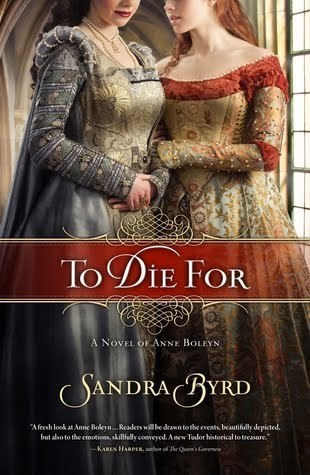
Overview
To Die For, is the story of Meg Wyatt, pledged forever as the best friend to Anne Boleyn since their childhoods on neighboring manors in Kent. When Anne's star begins to ascend, of course she takes her best friend Meg along for the ride. Life in the court of Henry VIII is thrilling at first, but as Anne's favor rises and falls, so does Meg's. And though she's pledged her loyalty to Anne no matter what the test, Meg just might lose her greatest love--and her own life--because of it.
Meg's childhood flirtation with a boy on a neighboring estate turns to true love early on. When he is called to follow the Lord and be a priest she turns her back on both the man and his God. Slowly, though, both woo her back through the heady times of the English reformation. In the midst of it, Meg finds her place in history, her own calling to the Lord that she must follow, too, with consequences of her own. Each character in the book is tested to figure out what love really means, and what, in this life, is worth dying for.
Though much of Meg's story is fictionalized, it is drawn from known facts. The Wyatt family and the Boleyn family were neighbors and friends, and perhaps even distant cousins. Meg's brother, Thomas Wyatt, wooed Anne Boleyn and ultimately came very close to the axe blade for it. Two Wyatt sisters attended Anne at her death, and at her death, she gave one of them her jeweled prayer book--Meg.
My Review
Although the novel To Die For by Sandra Byrd is a novel about Anne Boleyn, it is told through the first person narrative of Meg Wyatt, her friend, and true historical personage. From their early youth to Anne's final moments, Meg tells the story of this fascinating queen's life, from its fabulous rise to its tremendous fall.
Sandra Byrd did a wonderful job at writing a well researched story. The writing flowed seamlessly and drew me into the story from first to last page. I was impressed because she skillfully weaved political fact and Reformation details throughout with such ease, and so simply, that it was not obtrusive or confusing in the least. I especially appreciated the fact that there just enough characters for me to follow and remember as I read along.
To Die For is the first book in a new series entitled The Ladies in Waiting Series. I hope that future books in the series will branch out beyond the over-done Tudors. With plenty of intrigue and twists and turns, this is an all-around, multi-dimensional novel with plenty to keep one reading to the end.
I LOVE COMMENTS











Overview
To Die For, is the story of Meg Wyatt, pledged forever as the best friend to Anne Boleyn since their childhoods on neighboring manors in Kent. When Anne's star begins to ascend, of course she takes her best friend Meg along for the ride. Life in the court of Henry VIII is thrilling at first, but as Anne's favor rises and falls, so does Meg's. And though she's pledged her loyalty to Anne no matter what the test, Meg just might lose her greatest love--and her own life--because of it.
Meg's childhood flirtation with a boy on a neighboring estate turns to true love early on. When he is called to follow the Lord and be a priest she turns her back on both the man and his God. Slowly, though, both woo her back through the heady times of the English reformation. In the midst of it, Meg finds her place in history, her own calling to the Lord that she must follow, too, with consequences of her own. Each character in the book is tested to figure out what love really means, and what, in this life, is worth dying for.
Though much of Meg's story is fictionalized, it is drawn from known facts. The Wyatt family and the Boleyn family were neighbors and friends, and perhaps even distant cousins. Meg's brother, Thomas Wyatt, wooed Anne Boleyn and ultimately came very close to the axe blade for it. Two Wyatt sisters attended Anne at her death, and at her death, she gave one of them her jeweled prayer book--Meg.
My Review
Although the novel To Die For by Sandra Byrd is a novel about Anne Boleyn, it is told through the first person narrative of Meg Wyatt, her friend, and true historical personage. From their early youth to Anne's final moments, Meg tells the story of this fascinating queen's life, from its fabulous rise to its tremendous fall.
Sandra Byrd did a wonderful job at writing a well researched story. The writing flowed seamlessly and drew me into the story from first to last page. I was impressed because she skillfully weaved political fact and Reformation details throughout with such ease, and so simply, that it was not obtrusive or confusing in the least. I especially appreciated the fact that there just enough characters for me to follow and remember as I read along.
To Die For is the first book in a new series entitled The Ladies in Waiting Series. I hope that future books in the series will branch out beyond the over-done Tudors. With plenty of intrigue and twists and turns, this is an all-around, multi-dimensional novel with plenty to keep one reading to the end.
I LOVE COMMENTS










Published on November 23, 2011 12:24
November 22, 2011
Elizabeth and Hazel: Two Women of Little Rock by David Margolick
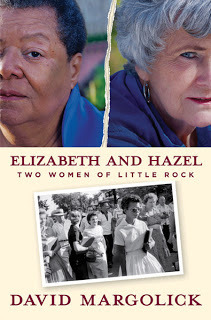 Review by Cori Van Housen
Review by Cori Van HousenElizabeth and Hazel is the true story of one moment in the lives of two young women that changed them, and history, forever. In fall of 1957, with 9 select black students enrolled, Central High School in Little Rock, AK, desegregated. Shy and bookish Elizabeth, for all her 15 years of growing up in the segregated south, had precious little idea of, and even less preparation for, the vitriol about to be unleashed as she did the unthinkable: simply walk to school. Outgoing Hazel, also 15, loved being the centre of attention. The camera's eye caught Elizabeth walking stoically amid a jeering crowd while behind her, Hazel shouted angry epithets.
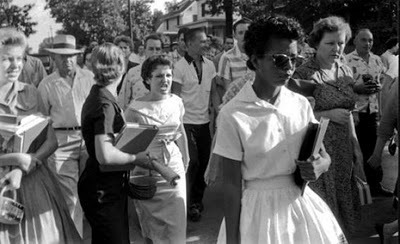 Margolick has not so much written a story as an anthology, compiling snippets from the many lives and events tangential to the photograph. In doing so, he uniquely explores desegregation, its impact on individuals, community, and country; effectively challenging any simplistic view of racism or its solutions. Moving out from the vortex surrounding Elizabeth, Margolick captures the many-faceted nature of the problem. One must sympathize with Elizabeth, ill-suited for the role of groundbreaker. She ultimately emerges from Central High shell-shocked, unable to move past her experiences. Hazel, on the other hand, garners little initial sympathy but experiences great growth in subsequent years.
Margolick has not so much written a story as an anthology, compiling snippets from the many lives and events tangential to the photograph. In doing so, he uniquely explores desegregation, its impact on individuals, community, and country; effectively challenging any simplistic view of racism or its solutions. Moving out from the vortex surrounding Elizabeth, Margolick captures the many-faceted nature of the problem. One must sympathize with Elizabeth, ill-suited for the role of groundbreaker. She ultimately emerges from Central High shell-shocked, unable to move past her experiences. Hazel, on the other hand, garners little initial sympathy but experiences great growth in subsequent years.The relationship which eventually forms between Hazel and Elizabeth serves to illustrate the difficulties of race relations, where good intentions aren't always enough, trust is hard-won (and hard to maintain), and a residue of resentment and bad feelings is left on both sides of the equation. Summing up for Hazel at one point, the author writes, "Whites weren't ready for desegregation in 1957, and blacks weren't ready for reconciliation now." For the most part, Margolick does not venture conclusions; he relates the facts in a tidy, journalistic staccato. He does not tell us what to think. Instead, he gives us a fascinating read, an interweaving of tensions and cross-currents of conflict: people at odds with each other, and even within themselves. I LOVE COMMENTS










Published on November 22, 2011 08:24
November 18, 2011
Women - Don't Drive
Published on November 18, 2011 17:08







